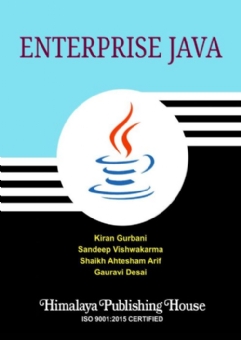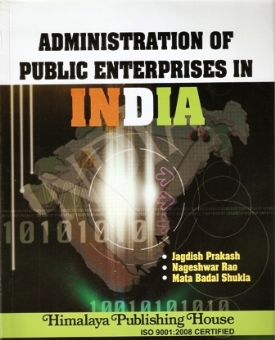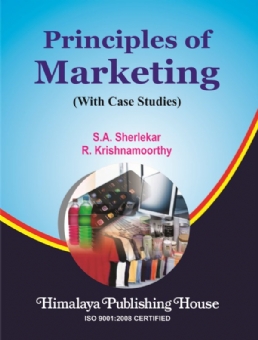The evolution of advanced object oriented programming language such as C++ and Java has provided very effective and efficient programming tools. Specially, Java can be used for implementing Windows and Web Application concepts. Due to increasing popularity of Java as a prominent programming language for implementing advanced features, University of Mumbai has included “Enterprise Java” in its Revised Syllabus of T.Y.B.Sc. (IT), Semester V.
This book has been designed as per new revised syllabus of T.Y.B.Sc. (IT), Mumbai University. This book incorporates advanced concepts of Web applications and services of Java Programming. This book includes all the related topics with variety of examples which is understandable to students.
This book is organised in 5 units.
Unit 1 contains six chapters which covers Understanding Java EE, Java EE Architecture, Server and Containers, Introduction to Java Servlets, Servlet API and Life Cycle, Working with Servlets, Working with Database.
Unit 2 contains five chapters which covers Request Dispatcher, Cookies, Sessions, Working with Files, Working with Non-blocking I/O.
Unit 3 contains five chapters which covers Introduction to Java Server Pages, Getting Started with Java Server Pages, Actions, Elements, Implicit Objects, Scope and EI Expressions, Java Server Pages and Standard Tag Libraries.
Unit 4 contains five chapters. Introduction to Enterprise Java Beans, Working with Session Beans, Working with Message Driven Beans, Interceptors, Java Naming and Directory Interface.
Unit 5 contains five chapters which covers Persistence, Object/Relational Mapping and JPA, Introduction to Java Persistence API, Writing JPA Application, Introduction to Hibernate and Writing Hibernate Application.
This book also covers all the University practical with proper example.
Contents –
Unit – I
1. Understanding Java EE
2. Java EE Architecture, Server and Containers
3. Introduction to Java Servlets
4. Servlet API and Life cycle
5. Working with Servlets
6. Working with Database
Unit – II
7. RequestDispatcher
8. Cookies
9. Sessions
10. Working with Files
11. Working with Non-blocking I/O
Unit – III
12. Introduction to Java Server Pages
13. Getting Started with Java Server Pages
14. Actions Elements
15. Implicit Objects, Scope and EI Expressions
16. Java Server Pages Standard Tag Libraries
Unit – IV
17. Introduction to Enterprise JavaBeans
18. Working with Session Beans
19. Working with Message-driven Beans
20. Interceptors
21. Java Naming and Directory Interface
Unit – V
22. Persistence, Object/Relational Mapping and JPA
23. Introduction to Java Persistence API
24. Writing JPA Application
25. Introduction to Hibernate
26. Writing Hibernate Application
Practicals







